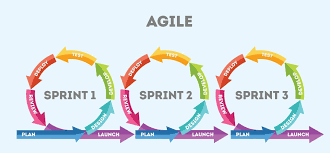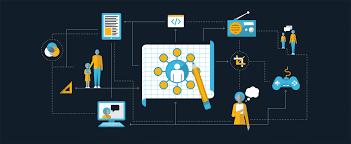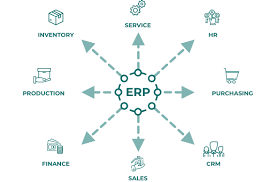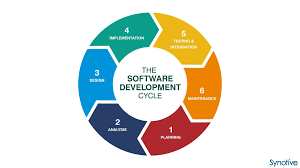The Agile Programming Methodology: A Comprehensive Guide
Agile programming is a software development approach that emphasizes flexibility, collaboration, and iterative development. It focuses on delivering small, incremental releases and adapting to change quickly. This methodology has gained popularity in recent years due to its ability to respond to changing requirements and deliver high-quality software efficiently.
One of the key principles of agile programming is the concept of sprints. Sprints are short development cycles, typically lasting 1-4 weeks, during which a small set of features or user stories are developed and tested. This allows for rapid feedback and enables teams to adjust their priorities based on user feedback and changing requirements.
Another important aspect of agile programming is the emphasis on collaboration and communication. Agile teams work closely together, including developers, testers, product owners, and other stakeholders. Daily stand-up meetings are held to discuss progress, challenges, and plans for the day. This constant communication helps ensure that everyone is aligned and working towards a common goal.
Continuous integration and continuous delivery (CI/CD) are also key components of agile programming. By integrating code frequently and automating testing and deployment processes, teams can deliver software more quickly and with fewer errors. This allows for faster feedback loops and ensures that any issues can be addressed promptly.
In conclusion, agile programming is a powerful methodology that enables teams to respond quickly to changing requirements, deliver high-quality software efficiently, and foster collaboration among team members. By embracing the principles of agility, organizations can stay competitive in today’s fast-paced digital landscape.
Understanding Agile Methodology: Key Processes, Types, Principles, and Phases
- What are the 4 Agile processes?
- What are the four types of Agile?
- What are the 5 principles of agile methods?
- Which programming language is used in Agile?
- What are the 5 phases of Agile?
- What are the 4 core principles of Agile methodology?
What are the 4 Agile processes?
In agile programming methodology, there are four core processes that define the framework: Scrum, Kanban, Lean, and Extreme Programming (XP). Each of these processes offers a unique approach to software development, emphasizing collaboration, flexibility, and continuous improvement. Scrum focuses on iterative development and regular feedback through short sprints. Kanban visualizes work in progress and aims to optimize flow efficiency. Lean aims to eliminate waste and deliver value quickly. Extreme Programming (XP) emphasizes practices such as pair programming, test-driven development, and continuous integration to ensure high-quality software delivery. By understanding and implementing these agile processes effectively, teams can enhance their productivity and deliver value to stakeholders efficiently.
What are the four types of Agile?
In the realm of Agile programming methodology, there are four main types that are widely recognized: Scrum, Kanban, Lean, and Extreme Programming (XP). Each type has its own unique approach and principles, catering to different project requirements and team dynamics. Scrum emphasizes iterative development with fixed-length sprints, Kanban focuses on visualizing workflow and limiting work in progress, Lean aims to eliminate waste and optimize efficiency, while XP prioritizes software quality through practices like pair programming and test-driven development. Understanding these four types of Agile methodologies can help teams choose the right framework that best suits their project needs and objectives.
What are the 5 principles of agile methods?
The 5 principles of agile methods are essential guidelines that underpin the agile programming methodology. These principles include prioritizing individuals and interactions over processes and tools, focusing on working software over comprehensive documentation, collaborating with customers throughout the development process, responding to change rather than following a rigid plan, and fostering a culture of continuous improvement and reflection within the team. By adhering to these principles, agile teams can effectively navigate the complexities of software development, deliver value to customers quickly, and adapt to evolving requirements with agility and efficiency.
Which programming language is used in Agile?
In Agile programming methodology, the choice of programming language is not restricted to a specific language. Agile focuses more on the principles and practices of iterative development, collaboration, and adaptability rather than dictating a particular programming language. Teams working in Agile may use a variety of languages based on their project requirements, team expertise, and technology stack preferences. The flexibility to choose the most suitable programming language for a given project is one of the key strengths of Agile methodology, allowing teams to leverage the best tools for the job while maintaining a focus on delivering high-quality software efficiently.
What are the 5 phases of Agile?
In Agile programming methodology, the 5 phases typically include: 1) **Initiation**: This phase involves defining the project scope, objectives, and identifying key stakeholders. 2) **Planning**: Teams create a roadmap outlining tasks, timelines, and resources needed to achieve project goals. 3) **Execution**: Development work begins based on priorities established during planning, with regular feedback loops and adjustments as needed. 4) **Monitoring and Controlling**: Progress is tracked, and any deviations from the plan are addressed promptly to ensure project success. 5) **Closure**: The final phase involves delivering the completed project to stakeholders, conducting a retrospective to review lessons learned, and celebrating achievements before transitioning to the next project or iteration.
What are the 4 core principles of Agile methodology?
The four core principles of Agile methodology are customer collaboration over contract negotiation, responding to change over following a plan, individuals and interactions over processes and tools, and working software over comprehensive documentation. These principles emphasize the importance of flexibility, communication, collaboration, and delivering value to the customer in iterative cycles. By adhering to these core principles, Agile teams can effectively navigate changing requirements, foster teamwork, and deliver high-quality software that meets the needs of stakeholders.




